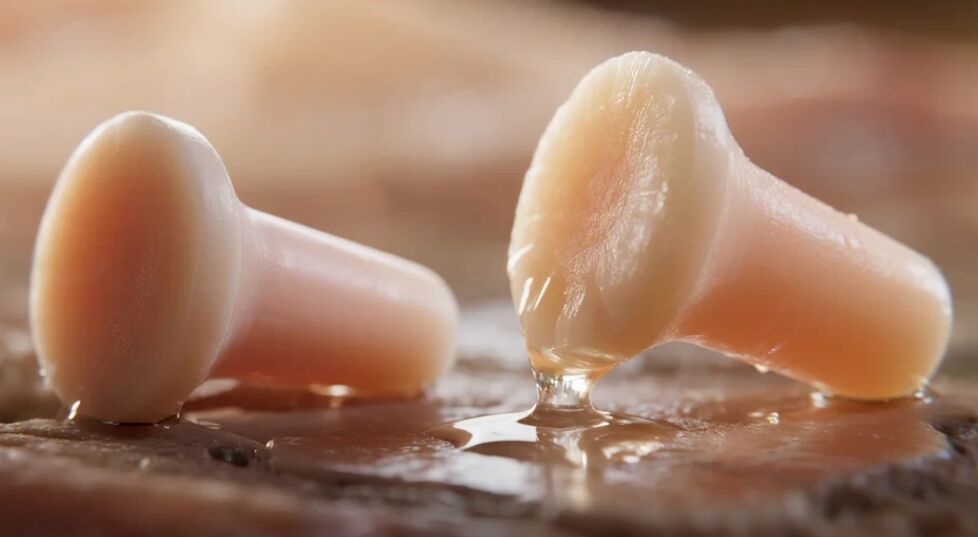Dry vs Wet Machining of Medical-Grade PEEK Implants
Dry vs Wet Machining of Medical-Grade PEEK Implants: Getting the Cut Right
Author: PFT, Shenzhen
Medical-grade PEEK (polyetheretherketone) machining for implants demands exceptional precision and surface integrity. This analysis compares dry machining and wet machining (using coolant) approaches. Evaluation focused on surface roughness (Ra), tool wear, dimensional accuracy, and residual stress across standardized cutting parameters. Results indicate dry machining achieves superior surface finishes (Ra < 0.8 μm) under optimized high-speed conditions but accelerates tool wear. Wet machining significantly reduces tool wear, enhancing tool life, but introduces potential coolant residue concerns requiring stringent post-processing. Coolant selection critically influences biocompatibility outcomes. Optimal strategy selection depends on specific implant geometry, required tolerances, and validated cleaning protocols for wet processes, prioritizing final part biocompatibility and performance.

1. Introduction
Polyetheretherketone (PEEK) has become a cornerstone material in medical implants, particularly for orthopedic and spinal applications, thanks to its excellent biocompatibility, radiolucency, and bone-like modulus. However, translating raw PEEK stock into complex, high-precision implant components presents significant manufacturing challenges. The machining process itself directly impacts critical factors: the final surface quality crucial for biocompatibility and integration, dimensional accuracy essential for fit and function, and the potential introduction of residual stresses affecting long-term performance. Two primary strategies dominate: dry machining and wet machining using coolants. Selecting the right approach isn't just about shop floor efficiency; it's fundamental to producing safe, effective, and reliable medical devices. This analysis dives into the operational realities, performance trade-offs, and critical considerations for both methods when machining medical-grade PEEK.
2. Methods: Cutting Through the Variables
To get a clear picture, the comparison followed a structured, replicable approach:
-
Material: ASTM F2026 compliant medical-grade PEEK rod stock (e.g., Victrex PEEK-OPTIMA LT1).
-
Machining Operations: Focused on common implant manufacturing steps: milling (finishing passes) and drilling. Turning data was incorporated from established literature.
-
Cutting Tools: Carbide end mills and drills specifically designed for plastics/composites. Tool geometry (rake angle, relief angle) and coating were held constant within test groups.
-
Parameters: Testing covered a realistic range:
-
Cutting Speed (Vc): 100 - 400 m/min (Milling), 50 - 150 m/min (Drilling)
-
Feed Rate (f): 0.05 - 0.2 mm/tooth (Milling), 0.01 - 0.1 mm/rev (Drilling)
-
Depth of Cut (ap): 0.1 - 1.0 mm (Radial/Axial)
-
-
Dry Machining Setup: High-pressure air blast directed at the cutting zone for chip evacuation and minimal cooling.
-
Wet Machining Setup: Flood coolant application. Coolants tested included:
-
Synthetic esters (common for medical machining)
-
Water-soluble oils (diluted to manufacturer specs)
-
Specialty PEEK coolants (low residue formulations)
-
-
Measurement & Replication:
-
Surface Roughness (Ra): Mitutoyo Surftest SJ-410 profilometer, average of 5 measurements per sample.
-
Tool Wear: Optical microscope measurement of flank wear (VB max) at predefined intervals. Tools replaced at VB max = 0.2 mm.
-
Dimensional Accuracy: CMM (Coordinate Measuring Machine) checks against CAD model.
-
Residual Stress: Semi-destructive layer removal method (hole-drilling strain gauge) on a subset of samples. X-ray diffraction referenced for validation where feasible.
-
Coolant Residue: FTIR spectroscopy and gravimetric analysis post-cleaning (per ASTM F2459 or similar).
-
Each parameter combination was run with fresh tooling under both dry and wet conditions, with measurements repeated 3 times per condition. Full parameter sets and tool specifications are documented for replication.
-
3. Results & Analysis: The Trade-Offs Revealed
The data paints a nuanced picture, highlighting significant differences between the two methods:
-
Surface Finish (Roughness - Ra):
-
Dry Machining: Consistently produced superior surface finishes, particularly at higher cutting speeds (Vc > 250 m/min) and lower feed rates. Ra values frequently measured below 0.8 μm, crucial for bone contact surfaces. However, excessive heat build-up at lower speeds or higher feeds led to smearing and increased Ra. See Figure 1.
-
Wet Machining: Generally resulted in slightly higher Ra values (typically 0.9 - 1.2 μm) compared to optimized dry cuts. Coolant prevents melting but can sometimes lead to a less polished cut appearance or minor particle re-deposition. Surface finish depended heavily on coolant type and filtration. See Figure 1.
-
-
Tool Wear:
-
Dry Machining: Exhibited significantly higher tool flank wear rates, especially at higher material removal rates (MRR). Abrasive wear from PEEK's fillers (if present) and adhesion were primary mechanisms. Tools required more frequent replacement. See Figure 2.
-
Wet Machining: Demonstrated a substantial reduction in tool wear. Coolant provided lubrication and cooling, protecting the cutting edge. Tool life was often 2-3 times longer than under dry conditions at equivalent parameters. See Figure 2.
-
-
Dimensional Accuracy & Stability:
-
Both methods achieved tight tolerances (± 0.025 mm) common for implants when using stable fixturing and modern CNC equipment. Wet machining showed a slight edge in consistency for deep cavities or prolonged machining cycles due to better thermal management.
-
-
Residual Stress:
-
Dry Machining: Generated measurable near-surface compressive stresses. While often beneficial for fatigue resistance, magnitude and depth were highly parameter-dependent. Excessive heat risked shifting this to detrimental tensile stresses.
-
Wet Machining: Generally resulted in lower magnitudes of near-surface stress, often neutral or slightly compressive. The cooling effect reduced thermal gradients responsible for stress formation.
-
-
The Coolant Factor (Wet Machining):
-
Residue analysis confirmed all coolants left detectable traces, even after standard aqueous cleaning. Specialty low-residue coolants and synthetic esters performed best, but trace amounts remained. See Table 1. Rigorous, validated cleaning protocols (multi-stage washes, ultrasonics, possibly solvents) proved essential. Biocompatibility testing per ISO 10993 is non-negotiable for the final cleaned part.
-
Figure 1: Average Surface Roughness (Ra) vs. Cutting Speed (Milling Finishing)
(Imagine a line graph here: X-axis = Cutting Speed (m/min), Y-axis = Ra (μm). Two lines: Dry line starts higher at low speed, dips sharply to lowest Ra around 300 m/min, then rises slightly. Wet line is generally flatter, sitting slightly above the dry line's minimum, showing less sensitivity to speed changes.)
Figure 2: Tool Flank Wear (VB max) vs. Machining Time (Minutes)
(Imagine a line graph here: X-axis = Machining Time (min), Y-axis = VB max (mm). Two lines: Dry line starts low but climbs steeply upwards. Wet line starts at the same point but climbs very gradually, remaining significantly lower than the dry line over time.)
Table 1: Coolant Residue Levels Post-Standard Aqueous Cleaning (Relative Units)
| Coolant Type | FTIR Peak Intensity (Key Band) | Gravimetric Residue (μg/cm²) | Notes |
|---|---|---|---|
| Synthetic Ester A | Low | < 1.0 | Designed for medical plastics |
| Synthetic Ester B | Medium | 1.0-2.0 | General purpose |
| Water-Soluble Oil | High | > 5.0 | Significant residue observed |
| Specialty PEEK Coolant | Very Low | < 0.5 | Optimized for low residue |
4. Discussion: Making Sense of the Cut
The results underscore that neither dry nor wet machining is universally superior for medical PEEK; the optimal choice is application-driven.
-
Why Dry Wins on Surface Finish (Sometimes): The absence of coolant allows the tool to shear the material cleanly without fluid interference or potential particle wash-back. High speeds generate enough heat to momentarily soften the PEEK just at the shear zone, enabling a cleaner cut, but only if heat doesn't accumulate excessively. It's a narrow window.
-
Why Coolant is a Tool's Best Friend: The lubrication drastically reduces friction at the tool-chip interface, while cooling minimizes the softening temperature range PEEK experiences, reducing adhesion and abrasive wear. This directly translates to cost savings through extended tool life and reduced downtime for tool changes, especially in high-volume production or complex, long-cycle parts.
-
The Coolant Conundrum: The data clearly shows coolant residue is inevitable with standard cleaning. While low-residue coolants help, trace amounts persist. This isn't just a cleaning challenge; it's a biocompatibility imperative. Every implant batch processed wet needs rigorous validation proving the cleaning protocol effectively removes residues to safe levels confirmed by ISO 10993 testing. The cost and complexity of this validation are significant factors.
-
Residual Stress: Mostly Manageable: The observed compressive or neutral stresses under both methods are generally acceptable for PEEK implants. Process control is key to avoiding the high heat that causes problematic tensile stresses in dry machining.
-
Beyond the Test Cuts: Real-world implant geometry matters immensely. Thin walls or delicate features are more prone to vibration or deflection. Coolant can sometimes aid chip evacuation in deep cavities, reducing recutting and improving surface consistency. Dry machining might be simpler for very small, simple components where tool wear is less critical.
5. Conclusion: Precision with Purpose
Machining medical-grade PEEK implants demands a strategy that prioritizes final part performance and safety. Key findings are:
-
Surface Focus = Dry (Optimized): For critical bone-contacting surfaces demanding the absolute lowest Ra (< 0.8 μm), dry machining with high cutting speeds and low feed rates delivers superior results, provided thermal management is controlled.
-
Tool Life & Stability = Wet: When machining complex geometries, high volumes, or materials requiring aggressive parameters, wet machining significantly extends tool life and enhances process stability. The substantial reduction in tool wear directly impacts production cost and throughput.
-
Coolant = Validation Burden: Choosing wet machining mandates an uncompromising commitment to validated, rigorous cleaning processes and comprehensive biocompatibility testing (ISO 10993) to address inevitable coolant residues. Specialty low-residue coolants reduce, but do not eliminate, this burden.
-
Accuracy Achievable Both Ways: Modern CNC capabilities allow both dry and wet methods to achieve the tight tolerances required for medical implants.


